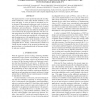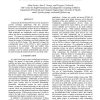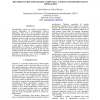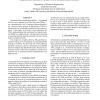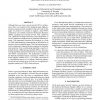84
Voted
FPL
2009
Springer
15 years 5 months ago
2009
Springer
This paper proposes a coarse-grained dynamically reconfigurable architecture, which offers flexible reliability to soft errors and aging. A notion of cluster is introduced as a ...
81
Voted
FPL
2009
Springer
15 years 5 months ago
2009
Springer
Custom operators, working at custom precisions, are a key ingredient to fully exploit the FPGA flexibility advantage for high-performance computing. Unfortunately, such operators...
94
Voted
FPL
2009
Springer
15 years 5 months ago
2009
Springer
Commercial SRAM-based FPGAs have the potential to provide aerospace applications with the necessary performance to meet next-generation mission requirements. However, the suscepti...
115
click to vote
FPL
2009
Springer
15 years 5 months ago
2009
Springer
Multitasking reconfigurable computers with one or more reconfigurable processors are being used increasingly during the past few years. One of the major challenges in such systems...
114
Voted
FPL
2009
Springer
15 years 5 months ago
2009
Springer
Reconfigurable systems are widely used nowadays to increase performance of computationally intensive applications. There exist a lot of synthesis tools that automatically generate...
FPL
2009
Springer
15 years 5 months ago
2009
Springer
This paper presents a methodology for estimating and optimising FPGA routing fabrics using high-level modelling and convex optimisation techniques. Experimental methods for explor...
FPL
2009
Springer
15 years 5 months ago
2009
Springer
We leverage properties of the logic synthesis netlist to define both a logic element architecture and an associated technology mapping algorithm that together provide improved lo...
111
Voted
FPL
2009
Springer
15 years 5 months ago
2009
Springer
Restricted Boltzmann Machines (RBMs) — the building block for newly popular Deep Belief Networks (DBNs) — are a promising new tool for machine learning practitioners. However,...
115
Voted
FPL
2009
Springer
15 years 5 months ago
2009
Springer
Although there are many neural network FPGA architectures, there is no framework for designing large, high-performance neural networks suitable for the real world. In this paper, ...
